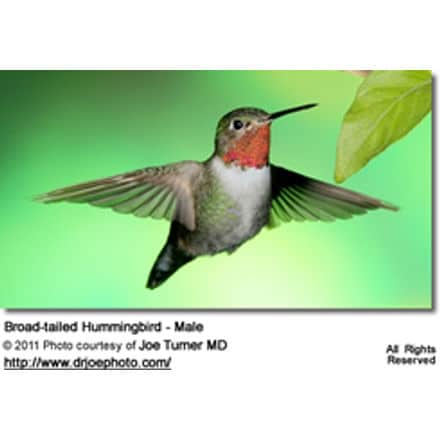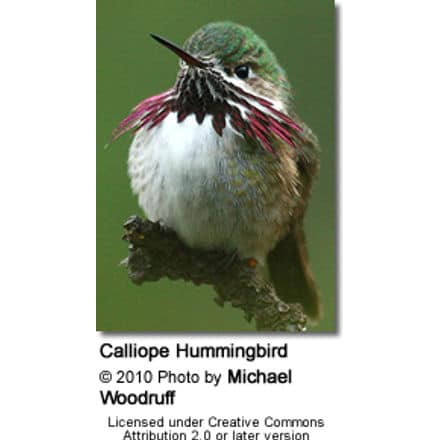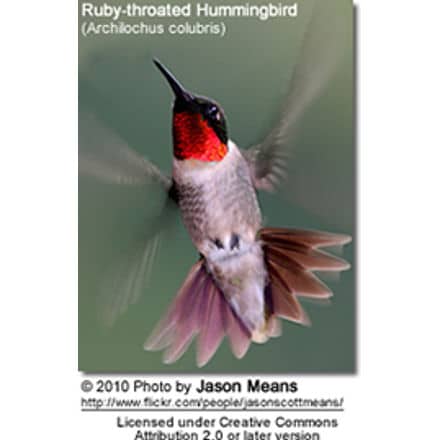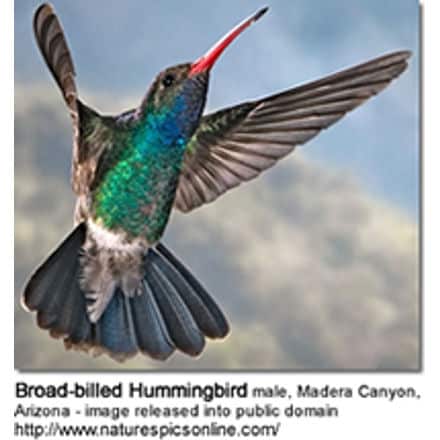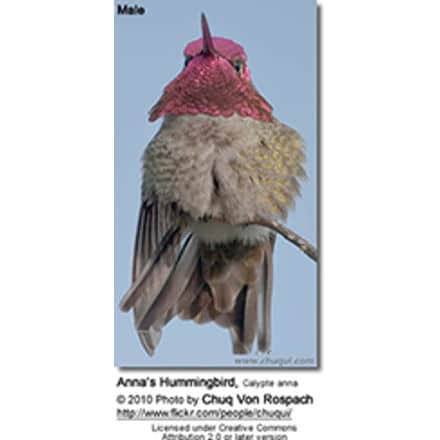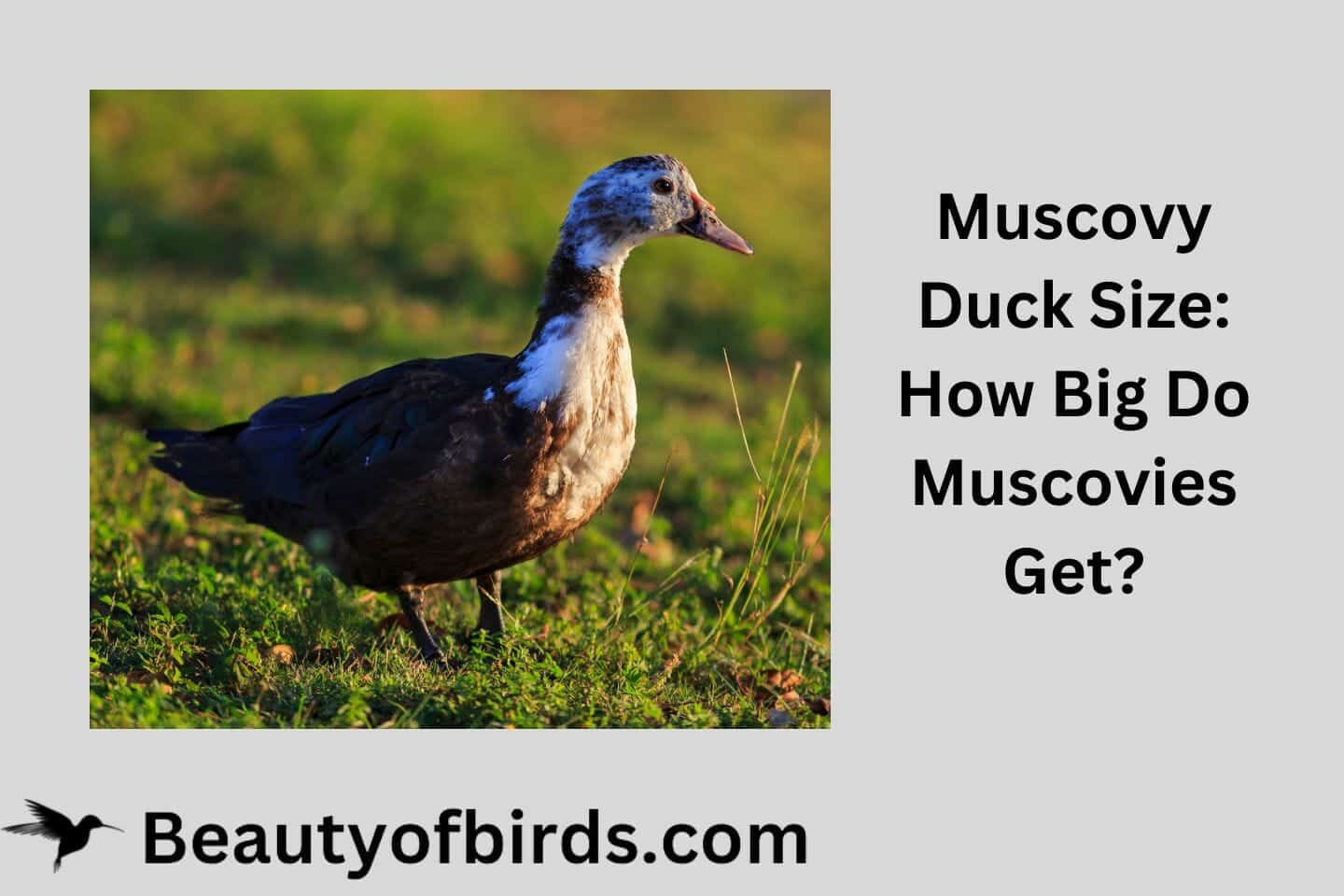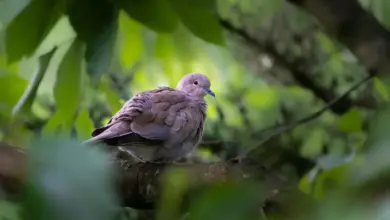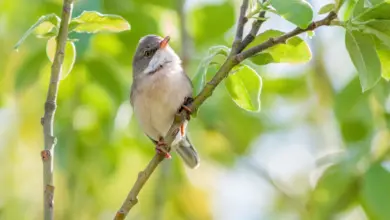Hummingbirds found in Idaho, USA
Hummingbirds found in the USA (by U.S. State) … Canada … Mexico … Puerto Rico … Jamaica … Honduras
Hummingbird Information … Hummingbird Extreme Metabolism and Survival and Flight Adaptions – Amazing Facts
The following 8 hummingbird species (with photos) have been reported in Idaho.
The most common hummingbirds in Idaho are the Black-chinned, Broad-tailed, Calliope and Rufous Hummingbirds. A few occasional vagrants have also been reported. Please scroll down for information and photos …
Migranting hummingbirds usually arrive in mid-May; they are usually gone after the first week of September.
Black-chinned Hummingbirds, Archilochus alexandri – Usually arrive in mid-April through mid-May, some as late as mid-June. Usually leave in September.
The male has a black, shimmering throat with a purple edge and pale feathers below that create a collar. However, unless the light is just right, the head looks all black. His back is green and there are some green feathers covering the chest.
The female is pale below (sometimes with a slightly speckled throat) and her back is green.
Broad-tailed Hummingbirds, Selasphorus platycercus – Arrive in April through June. Most in April and May. Most leave in September.
Males can most easily be identified by their iridescent, rose-red throats, white chest feathers and metallic green back and crown and their rounded tails. The males’ tails make whistling noises in flight.
Females lack the flashy throat patch of the male and are mostly pale below. Their white-tipped outer tail feathers are rust-colored close to the body and blackish in the center; the tail feathers in the center range from green to blackish.
Calliope Hummingbirds, Stellula calliope – Native – Arrive in April and May and leave in September.
The smallest breeding bird in North America. They are most easily confused with the Rufous Hummingbirds and the Broad-tailed Hummingbird.
Rufous Hummingbirds, Selasphorus rufus – Native – Arrive in March through June. Most between April and May. Usually leave by September.
These hummingbirds are usually found in gardens and at feeders. These birds are fearless, and are known for chasing away other hummingbirds and even larger birds, or rodents away from their favorite nectar feeders and flowers.
Males can easily be identified by their glossy orange-red throats.
Females have whitish, speckled throats, green backs and crowns, and rufous, white-tipped tail feathers.
Ruby-throated Hummingbirds, Archilochus colubris – Rare and Accidental – 1 Banded Idaho
The male has a ruby-red throat, a white collar, an emerald green back and a forked tail.
The female has a green back and tail feathers that are banded white, black and grey-green.
Rufous Hummingbird versus the similar Ruby-throated Hummingbird (Identification)
Broad-billed Hummingbirds (Cynanthus latirostris) – Accidental / Vagrants – 1 Male Banded in 2004 in Caldwell, Canyon County. These mostly Mexican hummingbirds venture into the United States regularly; they mostly visit the southern parts – but a few vagrants travel as far north as Wisconsin.
The male is glossy green above and on the chest. He has a deep blue throat. His straight and slender beak is red with a black tip. His slightly forked tail is dark above, and the under tail feathers are white.
The female is less colorful than the male. Her throat, chest and belly are light to medium grey. She has a white stripe over each eye.
Costa’s Hummingbirds, Calypte costae – Rare and Accidental –1 Banded
Males can easily be identified by the glossy purple crown and long, conspicuous throat feathers that project markedly down the side of the throats, giving it an elongated “moustache” appearance. The back is metallic green.
Females have greyish-green crowns (fop of the head) and backs. The chin and the plumage below are whitish, except for some black spotting on her throat. Her flanks are buffy-colored. She has a dark tail with white tips on the outer tail feathers.
They resemble the Anna’s Hummingbirds (not known to occur in Idaho), but the male’s gorget (throat feathers) is longer than that of the Anna’s.
Anna’s Hummingbirds, Calypte anna – Accidental / Vagrant – Wintering Hummingbird Species. Mostly recorded to occur between September and December. Only isolated records of them in January, May, April, June, July, August.
One of the larger and the most vocal hummingbirds in the United States, where it is the only species to produce a song; specifically the males produce a complex series of scratchy noises, sounding like a sharp “chee-chee-chee; when moving from flower to flower, they emit toneless “chip” vocalizations. All other hummingbirds in the United States are mostly silent.
They are well known for their territorial behavior; the male makes elaborate dive displays at other birds and sometimes even at people. At the bottom of their dives, they produce high-pitched loud popping sounds with their tail feathers.
Males have glossy dark rose-red throats and crowns, which may appear black or dark purple in low light. The underside is mostly greyish; and the back metallic green.
Females have light grey chests with white and red spotting on the throat, greenish back and white tipped tails.
They resemble the Costa’s Hummingbirds, but the male’s Costa’s Hummingbird‘s gorget (throat feathers) is longer than that of the Anna’s. They are larger than the Rufous Hummingbirds and lack the rusty coloration of the Rufous Hummingbirds.
Attract Hummingbirds to YOUR Garden!!
The favorite feeding plants for Hummingbirds in Idaho are:
Many hummingbirds favor red blossoms with a tubular shape (but some species prefer other colors). Hummingbirds feed readily on pink, blue, orange, peach and purple flowers.
- Anise Sage (Salvia guaranitica) – blue flowers. One of hummingbird favorites. Also: Salvia pensetmonoides
- Hummingbird Mints — (Agastache cana and Agastache rupestris / Agastache ‘Acupulco Salmon and Pink’ ) – Perennial; grows quickly; very fragrant.
- Flowering Maple (Abutilon sp.) – Not cold resistant. Only survives the winter if brought indoors. A prolific bloomer with lots of nectar. A favorite feeding plant.
- Trumpet honeysuckle (Lonicera sempervirens)
- Texas Sage (Salvia coccinea), Salvia ‘Maraschino’ (Bush Salvia)
- >Red Hot Poker (Tritoma)
- Bee Balm (Monarda)
- Penstemon barbatus
- Crocosmia ‘Lucifer’
Others:
- Crabapple and Sargent crabapple are hummingbird favorites
- Cross Vine (Bignonia capreolata) – evergreen. Orange-red flowers bloom during May and June.
- Corsage – an evergreen (Azalea cultivar) produces lavender blooms
- Wild red columbine (Aquilegia canadensis)
- Cardinal flower (Lobelia cardinalis)
- Day Lilies, Columbine, Sweet William, Common Foxglove, Hosta, Coral Bells and Shasta Daisy
Please Note: The articles or images on this page are the sole property of the authors or photographers. Please contact them directly with respect to any copyright or licensing questions. Thank you.


